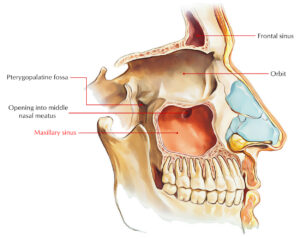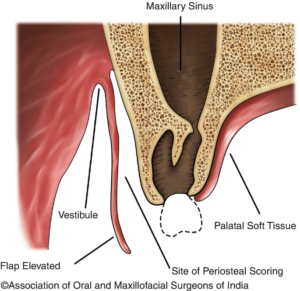Maxillary Sinus & Maxillary Teeth Relationship
Maxillary Sinuses
These are pyramid-shaped, paired sinuses on either side of the nose.
Sinuses are cavities filled with air and lined with cilia. They help in passage of air and filter the dust, viruses and bacteria. They lighten the weight of the skull, produce mucus, improve respiratory function, and help in the speech of an individual. Maxillary sinuses produce nitrous monoxide and improve the respiratory function of the nose.

Relationship Between Maxillary Sinus and Maxillary Teeth
The roots of canine, premolars and molars have a close relationship with the maxillary sinus.
Sometimes the roots of the maxillary molars protrude into the sinus, while at other times, even though on the radiograph the roots appear to be protruding, in actual reality, the sinus lining borders the roots closely, giving an illusion of the roots inside the maxillary sinus.
Spread of Infection from the Teeth into the Sinus-Maxillary Sinusitis of Dental Origin
This can happen when the teeth apices lie very close to the sinus floor, the periapical infection from the teeth roots can cause sinusitis.
Extraction of maxillary teeth with roots penetrating the sinus floor can lead to an oro-antral communication, which can cause sinusitis.
Sometimes accidentally roots or entire teeth can get dislodged into the sinus, causing an infection.

Care to be Taken by the Clinician:
- During extraction of maxillary teeth, an in depth analysis of the OPG to check the relationship of the sinus with the roots must be followed. A skilled surgeon must carry out the procedure and have mastery over the surgical technique.
- During the Implant placement surgery, a cone bean CT must be taken instead of an OPG, as It gives an accurate measurement of the bone height. Superposition of anatomical structures, magnification, and lack of cross sectional anatomy, which are the drawbacks of an OPG, can be overcome with a CBCT. This will help in precise judgement and calculation for implant placement and avoiding mishaps such as sinus floor perforation.
- Similarly, care is to be taken while performing endodontic surgery on premolars and molars to avoid an oroantral communication. This can result in sinus infection with the passage of bacteria, bone drill dust and resected tooth fragments entering the sinus cavity.
Conclusion
Having proper anatomical knowledge regarding the relationship between the sinus and the teeth is important, to avoid any procedural errors while treating the maxillary posterior teeth. Highly skilled clinicians at Solitaire Family Dentistry will use the appropriate diagnostic methods and take considerable care to prevent mishaps from happening. At the first onset of Dental pain, It is important to visit the best dentist to determine the source of pain.
FAQ
1. What is the Maxillary Sinus?
A. These are pyramid-shaped, paired sinuses on either side of the nose.
Sinuses are cavities filled with air and lined with cilia. They help in passage of air and filter the dust, viruses and bacteria. They lighten the weight of the skull, produce mucus, improve respiratory function, and help in the speech of an individual. Maxillary sinuses produce nitrous monoxide and improve the respiratory function of the nose.
2. Relationship Between Maxillary Sinus and Maxillary Teeth
A. The roots of the canine, premolars, and molars have a close relationship with the maxillary sinus. Sometimes the roots of the maxillary molars protrude into the sinus, while at other times, even though on the radiograph the roots appear to be protruding, in actual reality, the sinus lining borders the roots closely, giving an illusion of the roots inside the maxillary sinus.


